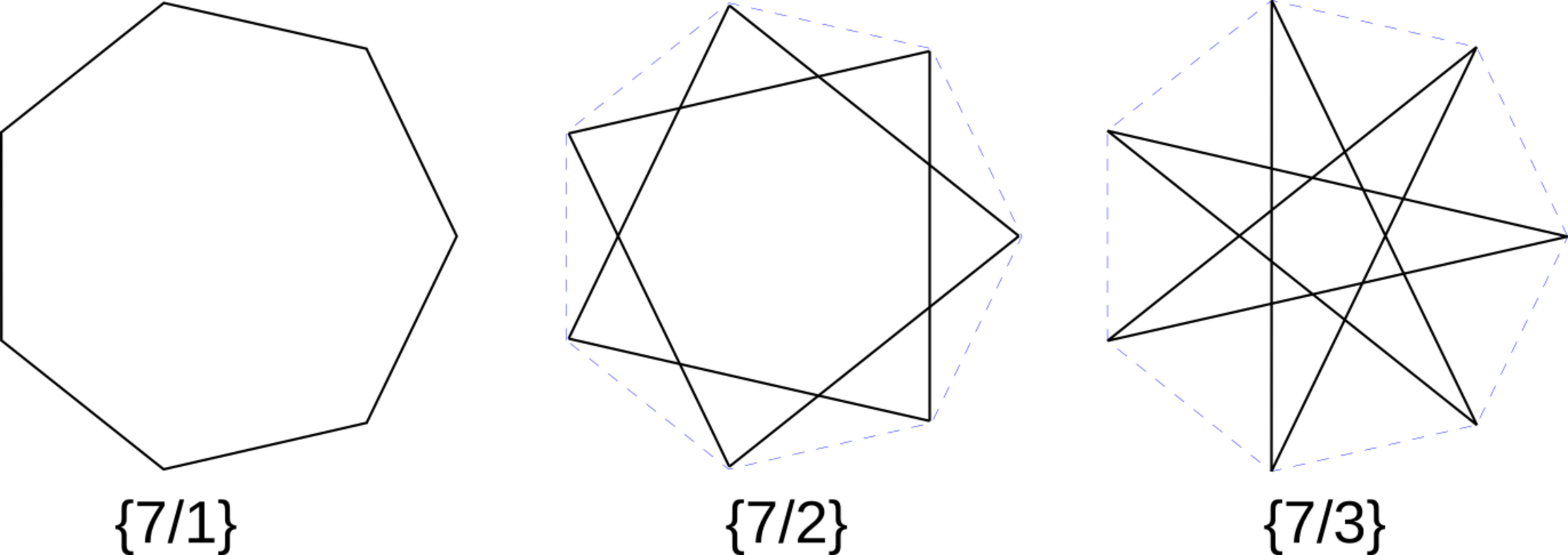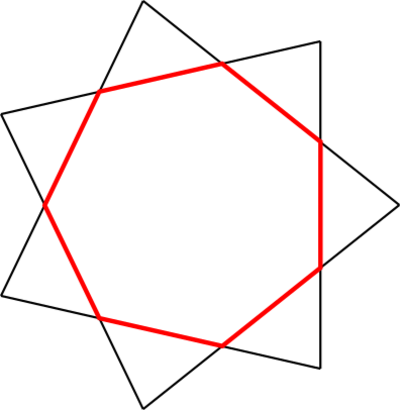Stars Within Stars
Let denote the -pointed star formed by joining every vertex on a convex -gon until you reach the starting point. This is repeated with different starting points if necessary until we form a -pointed star.
Is it true that contains if ?
Note:
-
is defined for all , and .
-
As an explicit example, the following shows three possible -pointed stars. Here contains because there is an instance of inside .


This section requires Javascript.
You are seeing this because something didn't load right. We suggest you, (a) try
refreshing the page, (b) enabling javascript if it is disabled on your browser and,
finally, (c)
loading the
non-javascript version of this page
. We're sorry about the hassle.
The first intersections inward from there, red points in the image, are equal in number, but they are located between the black points and the star polynomial connecting them skips one fewer points, in this case three.
Next set of intersections, blue in the image, contains again the same number of points but their connection skips only two, etc. all the way to skipping none at all.
This construction can be done for any p , with each layer inward having q one smaller than the previous one, so no q will be skipped and all { p , r } combinations with r < q will be present, as well as the original q , of course.